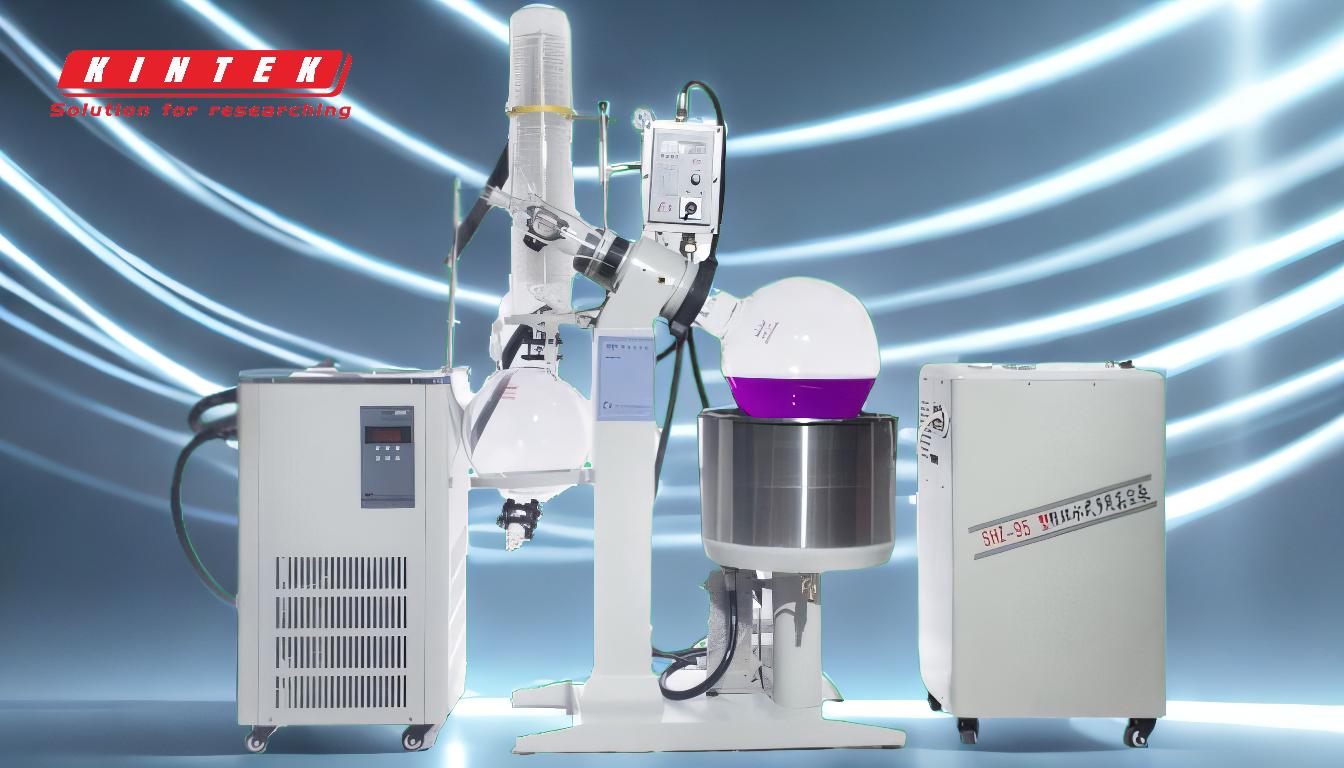Rotating the flask in a rotary evaporator (rotovap) is a critical step that significantly enhances the evaporation process. The primary reason for rotating the flask is to increase the surface area of the solvent, which accelerates evaporation. By rotating the flask, the solvent forms a thin film on the inner surface, allowing for faster and more efficient removal of the solvent under reduced pressure and controlled heating. This process also minimizes the risk of "bumping," where rapid vapor formation can disrupt the liquid. Overall, rotation improves the efficiency, speed, and safety of the evaporation process.
Key Points Explained:

-
Increased Surface Area for Evaporation:
- When the flask rotates, the solvent spreads into a thin film across the inner surface of the flask. This thin film dramatically increases the surface area exposed to the vacuum and heat, enhancing the evaporation rate. A larger surface area allows more solvent molecules to escape into the vapor phase simultaneously, speeding up the process.
-
Centrifugal Force and Thin Film Formation:
- Rotation generates centrifugal force, which pushes the liquid solvent against the inner walls of the flask. This force ensures that the solvent forms a uniform, thin film, maximizing the surface area available for evaporation. Without rotation, the solvent would pool at the bottom, reducing the surface area and slowing evaporation.
-
Enhanced Heat Transfer:
- The thin film created by rotation allows for more efficient heat transfer from the water bath to the solvent. Heat is evenly distributed across the larger surface area, ensuring that the solvent evaporates uniformly and quickly. This controlled heating prevents localized overheating, which could damage sensitive compounds.
-
Reduction of "Bumping":
- Bumping occurs when a large pocket of solvent vapor forms rapidly, causing violent displacement of the liquid. Rotation minimizes this risk by ensuring a steady and controlled evaporation process. The thin film reduces the likelihood of sudden vapor formation, making the process safer and more predictable.
-
Improved Efficiency Under Vacuum:
- The combination of rotation and vacuum lowers the boiling point of the solvent, allowing it to evaporate at lower temperatures. This is particularly useful for heat-sensitive compounds. The increased surface area from rotation ensures that the solvent evaporates efficiently even at these reduced pressures.
-
Agitation of the Water Bath:
- The rotating flask gently agitates the water bath, promoting even heat distribution. This ensures consistent heating of the flask and prevents hot spots, further enhancing the evaporation process.
-
Practical Benefits for Users:
- For equipment and consumable purchasers, understanding the importance of rotation in a rotovap highlights the need for a reliable and adjustable rotation mechanism. A well-designed rotovap with smooth rotation ensures optimal performance, reduces solvent waste, and protects sensitive materials.
In summary, rotating the flask in a rotary evaporator is essential for maximizing evaporation efficiency, ensuring safety, and protecting the integrity of the materials being processed. It is a key feature that makes rotary evaporation a preferred method for solvent removal in laboratories.
Summary Table:
| Key Benefit | Explanation |
|---|---|
| Increased Surface Area | Rotation spreads solvent into a thin film, accelerating evaporation. |
| Centrifugal Force | Ensures uniform thin film formation for maximum evaporation efficiency. |
| Enhanced Heat Transfer | Even heat distribution prevents overheating and protects sensitive compounds. |
| Reduction of Bumping | Minimizes violent vapor formation, ensuring a safer process. |
| Improved Efficiency Under Vacuum | Lowers boiling point, ideal for heat-sensitive materials. |
| Agitation of Water Bath | Promotes even heat distribution and prevents hot spots. |
| Practical Benefits | Reliable rotation mechanisms optimize performance and reduce solvent waste. |
Upgrade your lab’s efficiency with a high-quality rotary evaporator—contact us today to learn more!














